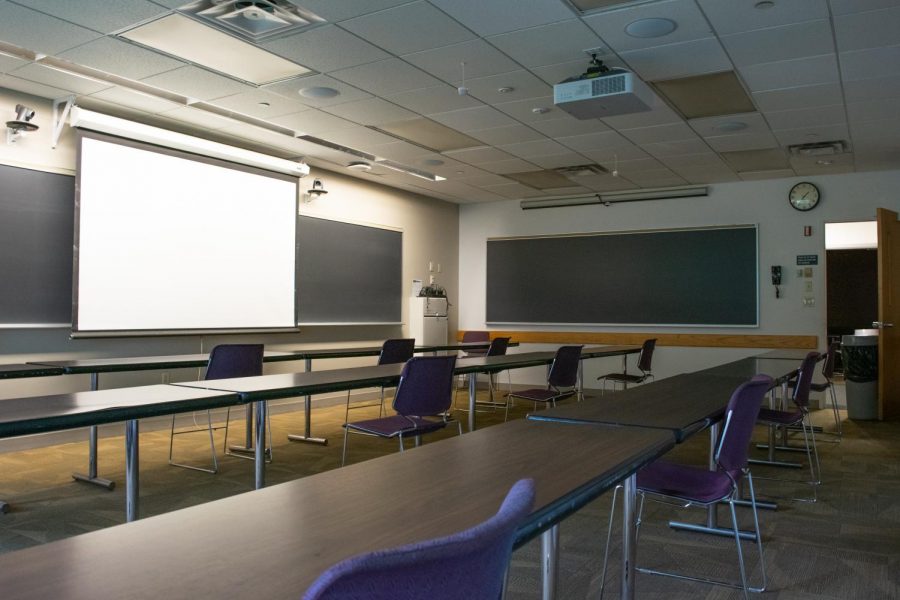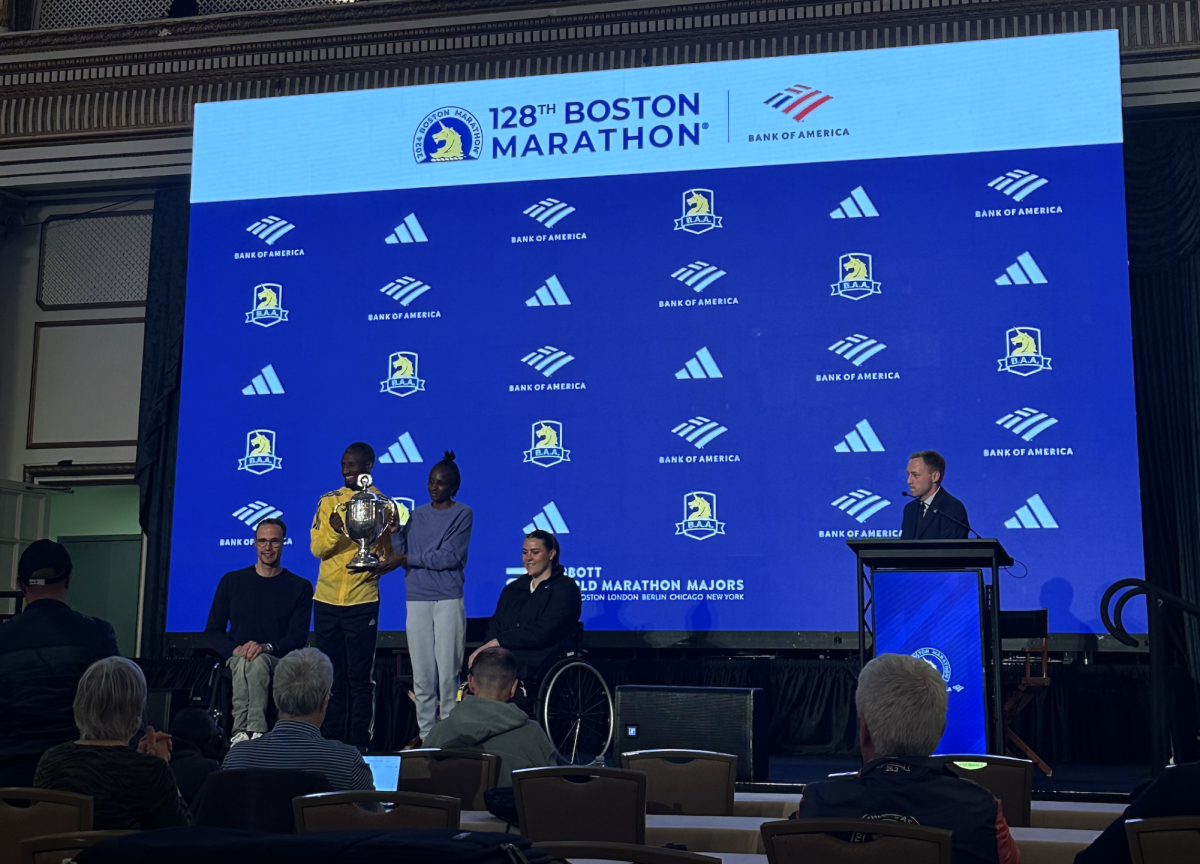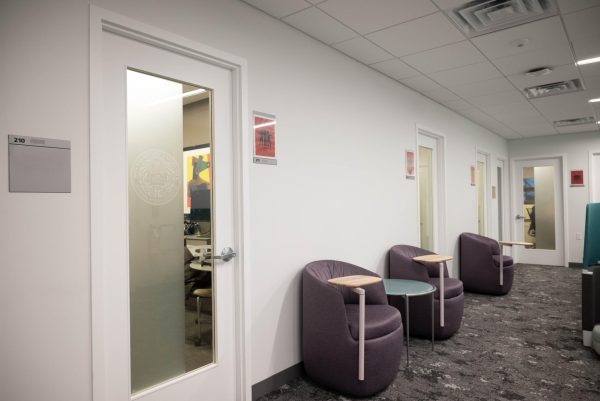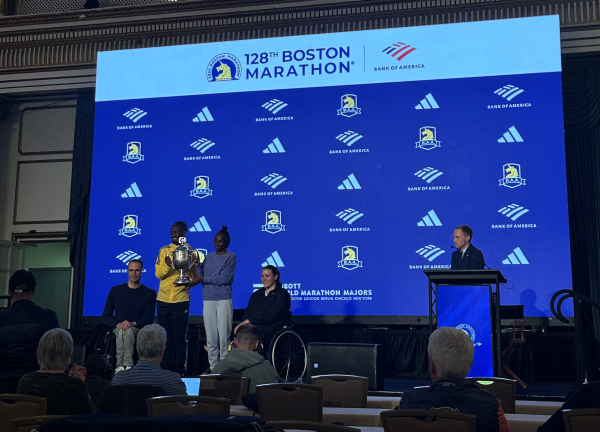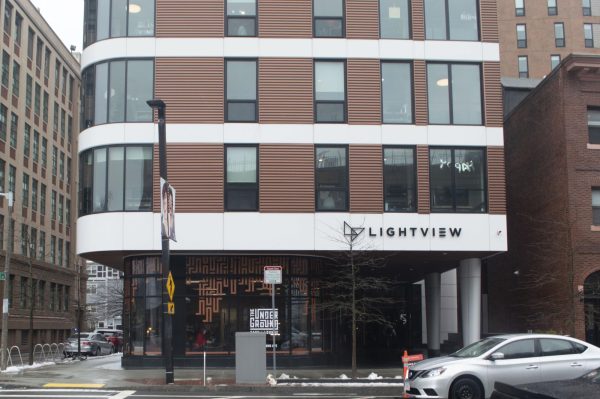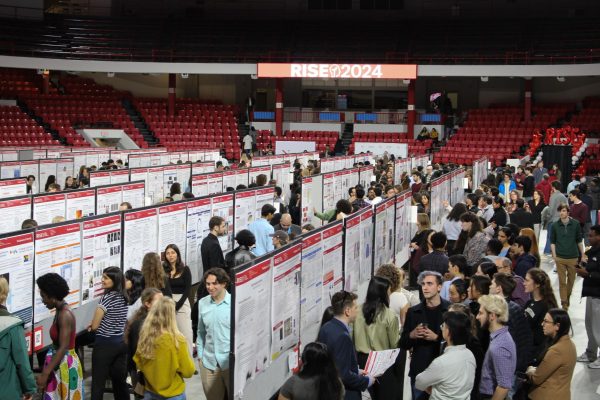Faculty members describe confusion, pressure to return to campus
“I know that the chances of students dying are low, but is that what it’s going to take?” said Abbie Levesque, a doctoral candidate in English and instructor of first-year writing.
October 12, 2020
After the conclusion of the first month of Hybrid NUflex, students and faculty have entered the routine of classes. However, during the summer and as the university outlined its hybrid plan, faculty felt pressure to return as well as confusion regarding reopening. About two-thirds of faculty are now teaching on campus, according to Northeastern media relations.
“Later, when I saw the school touting, ‘Oh, look at how many professors chose to come back,’ it was a bit of a slap in the face because I know a lot of [professors] didn’t feel like they had a choice,” said an anonymous teaching faculty member in the College of Science, who requested anonymity in fear of professional retaliation.
Brandon Sichling, an assistant teaching professor and game design coordinator, never noted explicit pressure from the university, but felt the act of reopening and asking students and faculty to return serves as pressure in itself.
“I think that assuming that us being there was the default –– I think that’s pressure,” Sichling said.
Other professors echoed this pressure from the university at a faculty senate meeting Oct. 7.
The anonymous instructor provided The News with emails, policies and correspondences from the university. On June 30, Provost and Senior Vice President for Academic Affairs David Madigan and Chancellor and Senior Vice President for Learning Kenneth Henderson sent an email to all faculty and staff, updating them on policies for their return to campus.
“For some departments, meeting business goals and maintaining a standard of excellence may require 100 percent of their employees to be on site,” Madigan and Henderson wrote. “For other departments, a percentage of employees continuing to work remotely may be acceptable.”
Each request for remote work fell under two options. The first option was for faculty with “a medical or mental health-related concern, diagnosis or illness, or if [they] are in a high-risk category,” and they had to provide medical documentation. The second option was anything that fell outside of personal medical issues, and each request for remote work was handled individually.
“We understand that some faculty and staff have childcare challenges or medical conditions that may prevent or curtail their return to campus,” wrote Michael Armini, senior vice president of external affairs, in an email to The News. “There is an established process for considering requests for remote work, and they are handled on a case-by-case basis.”
Abbie Levesque, a doctoral candidate in English with a focus in writing and rhetoric and an instructor of first-year writing, opted to teach remotely. However, for a while, she said that it was unclear whether instructors would be approved for remote work, and while the English department was supportive, communication from the university was often confusing.
“At the university level, for a long time, it was mixed messaging,” Levesque said. “The students were being told that it was their choice whether they had online or in-person classes. A lot of them interpreted that to mean that they could choose whether they had an in-person, professorial experience.”
Sichling also said at first, the options in regards to reopening and remote teaching were confusing. They wanted to teach remotely because their partner is immunocompromised and initially thought they fell into the first option.
“When I clicked on option one, it was saying, basically, that I needed a doctor’s note,” Sichling said. “That was something that was very frustrating: the idea that I needed to justify my not wanting to be on public transit during a pandemic.”
However, once they read the opt-out information again, it was “all clear enough,” they said.
In the summer, the anonymous College of Science instructor noted that language from the university was akin to guilt-tripping for returning to campus.
“There was a lot of language, especially later in the summer, about how we made a promise to the students, and [how] we need your help in fulfilling this promise because they want to meet with you on the ground, and they believe that they are meeting with you on the ground,” the source said.
In the policy and procedures document, the university said they worked hard “to make campus a safe place to work and study and are looking forward to welcoming everyone back to campus this fall.”
“We understand that some individuals may be apprehensive about returning to campus,” the document said. “However, it is important to consider the extraordinary efforts underway to promote a safe environment for students, faculty and staff, including following guidance from public health authorities.”
In his email to The News, Armini echoed the sentiments established within the document.
“More than 90 percent of students are back on campus and they are eager to be taught in person by their faculty,” he wrote. “Beyond the classroom, there is value in faculty being on campus to interact with students, see their colleagues, and conduct research. So far, our contact tracing has not uncovered a single instance of virus transmission on campus.”
The anonymous instructor also explained that if faculty opted out of in-person instruction, they were not allowed on campus with no access to their offices or research labs, with “the spirit of this policy [being] that if you request to work remotely, the expectation is that you will conduct all of your university work remotely.”
Armini explained that faculty and staff must be participating in the university’s testing program to be on campus.
“This is not negotiable,” he wrote. “We cannot have faculty or staff flying under the radar on testing because they will put the community at risk. No one wants that.”
Now a month into the semester, faculty have mixed feelings regarding the implementation of NUflex.
For Levesque, teaching in the NUflex model feels like teaching two classes and is simply “a lot of work” due to little things like setting up breakout rooms and facilitating small group work.
“As a graduate student instructor, I spend a lot of time thinking about pedagogy [and] learning about pedagogy,” she said. “There’s no way to win with NUflex, at least when I’m teaching online.”
Sichling said that NUflex is not much of a concern to them and is teaching remotely.
“Since I don’t really have to deal with NUflex at all and a lot of my students are not even going into the classroom, it’s not that big of a concern,” they said. “I think we’ve had it relatively easy … It seems to me like in CAMD, and art and design in particular, this went pretty well.”
The anonymous instructor, who teaches on-campus lab courses, said they had to make safety policies and plans for distancing within the labs themselves, with no guidance from the university.
“We repeatedly asked the school for guidance, and they repeatedly said for lab courses, ‘It’s up to you,’” the source said.
However, Armini said that protocols for lab safety were implemented in August.
“Extensive protocols for reengaging research in the labs, and in the field, were provided to every associate dean for research, department chair and department safety officer,” Armini wrote. “If an individual faculty member is unaware of these guidelines there may have been a communication breakdown within their college.”
Throughout the summer, Levesque’s largest concern was the students, who were promised some semblance of normal if they were to return, she said.
“I know that the chances of students dying are low, but is that what it’s going to take?” Levesque said. “How many students have to suffer long term health effects in the prime of their lives to be able to have a social experience?”
Matt Yan can be reached at [email protected] and on Twitter at @yanmatt0.


